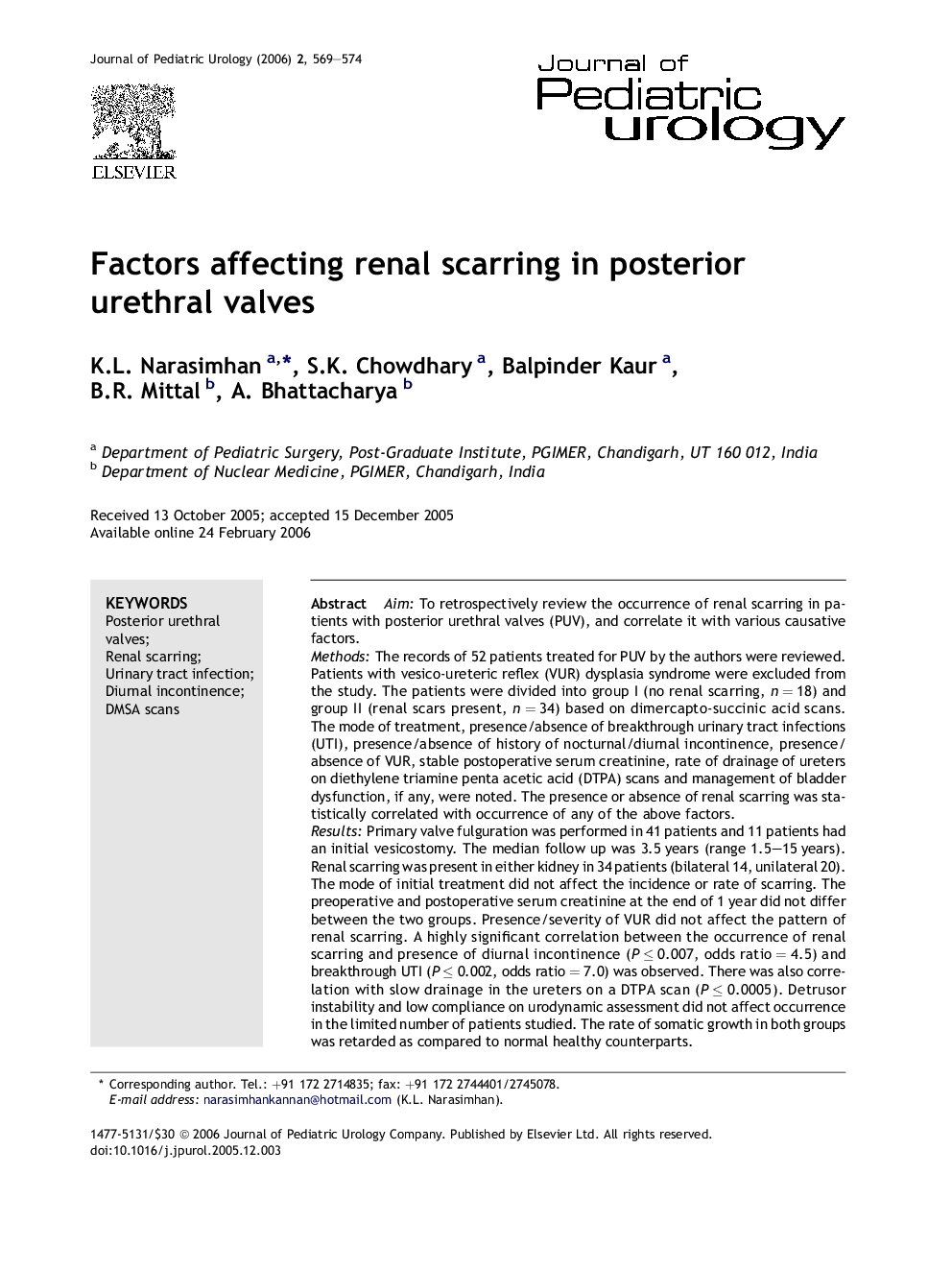| Article ID | Journal | Published Year | Pages | File Type |
|---|---|---|---|---|
| 4164178 | Journal of Pediatric Urology | 2006 | 6 Pages |
AimTo retrospectively review the occurrence of renal scarring in patients with posterior urethral valves (PUV), and correlate it with various causative factors.MethodsThe records of 52 patients treated for PUV by the authors were reviewed. Patients with vesico-ureteric reflex (VUR) dysplasia syndrome were excluded from the study. The patients were divided into group I (no renal scarring, n = 18) and group II (renal scars present, n = 34) based on dimercapto-succinic acid scans. The mode of treatment, presence/absence of breakthrough urinary tract infections (UTI), presence/absence of history of nocturnal/diurnal incontinence, presence/absence of VUR, stable postoperative serum creatinine, rate of drainage of ureters on diethylene triamine penta acetic acid (DTPA) scans and management of bladder dysfunction, if any, were noted. The presence or absence of renal scarring was statistically correlated with occurrence of any of the above factors.ResultsPrimary valve fulguration was performed in 41 patients and 11 patients had an initial vesicostomy. The median follow up was 3.5 years (range 1.5–15 years). Renal scarring was present in either kidney in 34 patients (bilateral 14, unilateral 20). The mode of initial treatment did not affect the incidence or rate of scarring. The preoperative and postoperative serum creatinine at the end of 1 year did not differ between the two groups. Presence/severity of VUR did not affect the pattern of renal scarring. A highly significant correlation between the occurrence of renal scarring and presence of diurnal incontinence (P ≤ 0.007, odds ratio = 4.5) and breakthrough UTI (P ≤ 0.002, odds ratio = 7.0) was observed. There was also correlation with slow drainage in the ureters on a DTPA scan (P ≤ 0.0005). Detrusor instability and low compliance on urodynamic assessment did not affect occurrence in the limited number of patients studied. The rate of somatic growth in both groups was retarded as compared to normal healthy counterparts.ConclusionBreakthrough UTI, diurnal incontinence and poor drainage of ureters on DTPA are associated with a higher incidence of renal scarring. Mode of initial treatment, presence or absence of VUR, and bladder abnormalities do not affect renal scarring in the short term.
